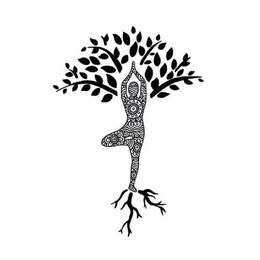
The more we commit to our yoga practice, the more we come to understand the value of working to move beyond our mind’s automatic habit of quickly labeling things, people and experiences as "good" or "bad," (or other such judgmental adjectives). We all see the world through tinted glasses based on our values and past experiences. When we cultivate the ability to realize this limiting behavior through meditation, mindfulness or yoga, we get closer to seeing things the way they really are.
This 2,000-year old Taoist parable beautifully illustrates this concept, and invites us to reframe our thinking to consider the big picture when it comes to our lives.
"An old Chinese farmer lost his best stallion one day and his neighbor came around to express his regrets, but the farmer just said, ‘Who knows what is good and what is bad.’ The next day the stallion returned bringing with him 3 wild mares. The neighbor rushed back to celebrate with the farmer, but the old farmer simply said, ‘Who knows what is good and what is bad.’ The following day, the farmer’s son fell from one of the wild mares while trying to break her in and broke his arm and injured his leg. The neighbor came by to check on the son and give his condolences, but the old farmer just said, ‘Who knows what is good and what is bad.’ The next day the army came to the farm to conscript the farmer’s son for the war, but found him invalid and left him with his father. The neighbor thought to himself, ‘Who knows what is good and what is bad." (Parable language quoted from the Secular Buddhist Blog.)
As Kent Moreno explains, "The Taoist prefers to look at life events without judgment or interpretation. According to Taoism, the true significance of events can never be understood as they are occurring, for in every event there are elements of both good and bad. Furthermore, each event has no specific beginning or end and may influence future events for years or even centuries to come."
As Moreno touches upon, events in life will always involve good and bad. The great achievement is often accompanied by many sacrifices. The turn of bad luck usually comes with a silver lining. And from the wider-angle perspective, something "bad," but small in scope, may happen that prevents a major calamity down the road.
If these ideas resonate with you, a great way to practice application of the philosophy is to begin with asanas (the physical practice of yoga). Work for a while with the intention to accept yourself exactly as you are each time you come to the mat. Make your yoga practice a no judgment zone. Ignore what the teacher and other students look like in identical poses. If your energy level is low, modify and observe child’s pose when needed, instead of pushing yourself to replicate yesterday’s practice. Use your flow to practice radical acceptance of the self. And above all – drop any notions of what “should” be happening! Once you find your way on the mat, begin to think about how these concepts can be extended into other parts of your life.
As Jon Kabat-Zinn puts it, "give up coercing, resisting, or struggling, in exchange for something more powerful and wholesome, which comes out of allowing things to be as they are without getting caught up in your attraction to or rejection of them, in the intrinsic stickiness of wanting, of liking, and disliking."
The more involved with yoga and yoga philosophy you get, the more you will learn that these ideas are fundamental to the tradition. Buddha describes yoga as "the journey of the self, through the self, to the self." Yoga is not a competitive sport (as much as Instagram may sometimes suggest that). It is not a place where we should be thinking along the lines of good, bad or most especially, should. It is an avenue to living a self-accepting, and therefore authentic, life.
 RSS Feed
RSS Feed